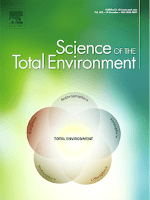
Science of The Total Environment
Scope & Guideline
Connecting Science and Sustainability for a Better Tomorrow
Introduction
Aims and Scopes
- Environmental Pollution and Contamination:
Research on the sources, effects, and mitigation of various pollutants, including heavy metals, pharmaceuticals, and microplastics, across different environmental compartments such as air, water, and soil. - Ecological and Health Impacts:
Studies examining the effects of environmental changes and pollutants on human health, wildlife, and ecosystem functions, often incorporating epidemiological approaches and toxicological assessments. - Climate Change and Biodiversity:
Investigations into how climate change alters ecological dynamics, species interactions, and biodiversity, including adaptations of flora and fauna to changing environmental conditions. - Sustainable Practices and Technologies:
Development and assessment of innovative technologies and practices aimed at enhancing sustainability, such as bio-remediation methods, waste management strategies, and resource recovery techniques. - Hydrology and Water Quality:
Research focusing on water resources, including hydrological modeling, water quality assessment, and the impacts of land use and management practices on aquatic ecosystems. - Soil Health and Management:
Studies on soil properties, microbial communities, and the effects of agricultural practices on soil health, emphasizing sustainable land-use strategies.
Trending and Emerging
- Microplastics Research:
There is a notable increase in studies addressing the sources, effects, and remediation strategies for microplastics, reflecting growing public concern and regulatory scrutiny over plastic pollution. - Antibiotic Resistance and Environmental Health:
Research on the spread of antibiotic resistance through environmental pathways, particularly in wastewater and agricultural runoff, has gained traction, emphasizing the interconnectedness of human health and environmental integrity. - Climate Resilience and Adaptation Strategies:
Emerging studies are focusing on adaptive management practices that enhance ecosystem resilience to climate change, including the restoration of degraded ecosystems and sustainable land use. - Wastewater-Based Epidemiology:
The application of wastewater analysis to monitor public health trends, especially during the COVID-19 pandemic, has seen a significant rise, showcasing its utility in early detection of disease outbreaks. - Integrated Environmental Management Approaches:
There's a growing emphasis on holistic approaches that integrate various environmental and socio-economic factors, promoting sustainable development and ecosystem services. - Emerging Contaminants:
Research on contaminants of emerging concern, such as pharmaceuticals and personal care products, is becoming increasingly prevalent, reflecting the need to understand their impacts on ecosystems and human health.
Declining or Waning
- Traditional Agricultural Practices:
Research on conventional farming methods has waned as there is a growing emphasis on sustainable agriculture, agroecology, and regenerative practices that enhance biodiversity and ecosystem services. - Single-Pollutant Studies:
The focus on isolated studies of single pollutants is decreasing as interdisciplinary approaches that consider multiple contaminants and their interactions are becoming more prevalent. - Static Environmental Assessments:
There is a decline in studies that provide static snapshots of environmental conditions without considering dynamic changes and long-term trends, as researchers increasingly recognize the importance of temporal and spatial variability. - Historical Pollution Case Studies:
Research centered on historical pollution events is less frequent, as current studies focus more on real-time assessments and predictive modeling for future scenarios. - Local Case Studies:
The trend is shifting away from localized case studies towards more global and regional assessments that can inform broader environmental policies and practices.
Similar Journals

Environmental Science-Advances
Empowering research to tackle global challenges.Environmental Science-Advances, published by the esteemed Royal Society of Chemistry, is a pioneering open-access journal dedicated to advancing the field of environmental sciences. Having commenced publication in 2022, this journal serves as a vital platform for the rapid dissemination of high-quality research covering a broad scope, including environmental chemistry, pollution management, water science and technology, and environmental engineering. With its commitment to open access, it ensures that vital environmental research is freely available to researchers, professionals, and students worldwide, thus fostering collaboration and innovation in addressing pressing environmental challenges. Currently, the journal is ranked in the Q2 and Q3 quartiles across various categories such as Environmental Engineering and Water Science, indicating its growing influence within the academic community. With the global imperative for sustainable environmental solutions, Environmental Science-Advances is positioned to become an invaluable resource for those dedicated to the study and solution of environmental issues.
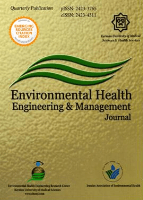
Environmental Health Engineering and Management Journal
Connecting Science and Public Health for a Better TomorrowEnvironmental Health Engineering and Management Journal is a premier platform dedicated to the dissemination of research findings in the essential field of environmental health. Published by Kerman University of Medical Sciences in Iran, this Open Access journal has been a beacon of scientific inquiry since its inception in 2014. With an ISSN of 2423-3765 and E-ISSN 2423-4311, it facilitates broad accessibility to cutting-edge research that addresses the complex interactions between environmental factors and human health. With a notable categorization in the Q3 quartile for Environmental Science and Public Health, alongside Q4 in Chemical Health and Safety, the journal underscores its commitment to quality and relevance. Currently ranked #132 out of 233 in Environmental Science within Scopus, it serves as a crucial resource for researchers and practitioners striving to tackle contemporary environmental challenges. The journal's scope includes innovative methodologies, environmental risk assessment, and sustainable health practices, positioning it as an indispensable reference for those invested in improving public health outcomes through environmental engineering and management.

Hydrology
Pioneering research in hydrological processes.Hydrology, published by MDPI, is a prominent open-access journal dedicated to advancing the field of hydrological science. Since its establishment in 2014, the journal has garnered a reputation for excellence, reflected in its classification within the Q2 quartile for 2023 across multiple categories including Earth-Surface Processes, Oceanography, Water Science and Technology, and Waste Management and Disposal. Based in Switzerland, Hydrology provides a vital platform for scholars and practitioners to disseminate research findings, promote innovative methodologies, and foster discussions on current trends affecting water resources and management globally. The journal is easily accessible online and aims to significantly contribute to the understanding of hydrological processes, offering insights that are pivotal for addressing contemporary environmental challenges. With Scopus rankings showcasing its growing influence, Hydrology is a crucial resource for researchers, students, and professionals committed to water science and sustainable practices.

APPLIED ECOLOGY AND ENVIRONMENTAL RESEARCH
Shaping the future of environmental research with impactful insights.Applied Ecology and Environmental Research is a distinguished journal published by ALOKI Applied Ecological Research and Forensic Inst Ltd, located in Hungary. Since its inception in 2003, the journal has provided a pivotal platform for the dissemination of innovative research and discussions pertaining to applied ecology and its intersection with environmental sciences. With its ISSN 1589-1623 and E-ISSN 1785-0037, the journal boasts a respectable presence, achieving a Q3 ranking in Agronomy and Crop Science and a Q4 ranking in Ecology, Evolution, Behavior, and Systematics as of 2023. This reflects its commitment to publishing high-quality research that is vital for advancing knowledge in these fields. While it primarily operates under a subscription model, authors and institutions are encouraged to contribute meaningful research that sparks dialogue and fosters collaboration among a diverse range of stakeholders in ecological research. Researchers, professionals, and students alike will find valuable insights and contributions that address contemporary environmental challenges and promote sustainability. Join the community of scholars who are shaping the future of ecology and environmental research through this impactful publication.
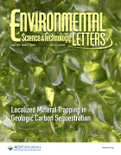
Environmental Science & Technology Letters
Unlocking innovative solutions to ecological challenges.Environmental Science & Technology Letters, published by the American Chemical Society, stands as a premier journal in the realm of environmental science and technology, focusing on pivotal studies that address pressing environmental challenges. With an impressive Q1 ranking in multiple categories including Ecology, Environmental Chemistry, and Pollution, this journal maintains a position of excellence within its field, achieving Scopus ranks that place it in the top percentile of Environmental Science disciplines. Although not open access, Environmental Science & Technology Letters offers vital insights and cutting-edge research that contribute significantly to the understanding and management of environmental issues. The journal’s objectives include disseminating ground-breaking findings and promoting discussions that lead to sustainable solutions. With convergence from 2013 to 2024, it continues to serve as an essential resource for researchers, professionals, and students committed to advancing knowledge and innovation in environmental science.

Rocznik Ochrona Srodowiska
Exploring Innovative Solutions for Environmental ChallengesRocznik Ochrona Srodowiska, published by the Middle Pomeranian Scientific Society for Environmental Protection, is an esteemed journal dedicated to advancing the field of environmental science in Poland and beyond. With an ISSN of 1506-218X, this peer-reviewed journal has established itself as a vital resource since its inception in 2007, addressing various environmental issues and promoting sustainable practices. Currently holding a Q3 category ranking in the Environmental Science (miscellaneous) field for 2023, it places itself in the 23rd percentile of Scopus rankings, reflecting a growing influence in the broader environmental research community. While the journal is not open access, it serves as an important conduit for researchers, professionals, and students to disseminate their findings and contribute to the interdisciplinary dialogue aimed at tackling pressing environmental challenges. With a commitment to rigorous research and practical applications, Rocznik Ochrona Srodowiska remains an essential platform for fostering innovation and collaboration in environmental studies.

Inland Waters
Transforming Knowledge into Action for Water StewardshipInland Waters, published by TAYLOR & FRANCIS LTD, stands as a prestigious scholarly journal dedicated to the critical examination of freshwater ecosystems and their management. With an ISSN of 2044-2041 and an E-ISSN of 2044-205X, this journal boasts a remarkable Q1 ranking in both Aquatic Science and Water Science and Technology for 2023, reflecting its significant impact in the field. Researchers and professionals can benefit from its comprehensive coverage of cutting-edge research, methodological advancements, and policy implications concerning inland waters. Committed to disseminating valuable knowledge in a vital area of environmental science, Inland Waters aims to foster collaboration and promote innovative solutions for sustainable water management practices. As it continues through its converged years from 2012 to 2024, the journal remains an essential resource for those dedicated to advancing our understanding and stewardship of freshwater environments worldwide.

WATER AIR AND SOIL POLLUTION
Pioneering studies in environmental sciences for lasting impact.Water Air and Soil Pollution is a leading peer-reviewed journal published by Springer International Publishing AG, focusing on the vital fields of environmental sciences, ecological modeling, and pollution management. Since its inception in 1971, the journal has contributed significantly to advancing knowledge in the interdisciplinary realms of Water Science and Technology, Environmental Chemistry, and Environmental Engineering. With an impressive history, the journal currently holds a Q2 quartile ranking in several categories, reflecting its high impact and relevance in these essential areas of research. Its rankings—such as #95 in Environmental Science: Water Science and Technology—illustrate its standing in the academic community. Researchers and practitioners alike can access a wealth of studies and reviews that aim to address pressing environmental concerns and foster sustainable practices, although the journal is not Open Access. Located in Switzerland, Water Air and Soil Pollution continues to be a critical resource for those dedicated to understanding and mitigating pollution, making it an indispensable tool for anyone engaged in ecological and environmental research.
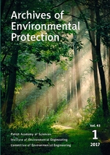
Archives of Environmental Protection
Exploring Solutions for Environmental ChallengesArchives of Environmental Protection, published by the Polish Academy of Sciences, is a pivotal journal in the field of Environmental Science. With an ISSN of 2083-4772 and E-ISSN of 2083-4810, this journal serves as a critical platform for disseminating innovative research and comprehensive reviews that address the complexities surrounding environmental issues. As of 2023, it holds a respectable Q3 ranking in Environmental Science, reflecting its relevance and contribution to the academic community, indicated by a Scopus rank of 124 out of 233 in the General Environmental Science category. Although it operates without Open Access, the journal's consistent publication from 2007 to 2024 emphasizes its commitment to advancing knowledge in diverse areas of environmental protection. Researchers, professionals, and students are encouraged to engage deeply with the wealth of insights offered through the rigorous peer-reviewed articles presented in this journal, which strive to foster sustainable practices and environmental stewardship.
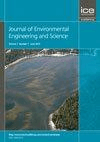
Journal of Environmental Engineering and Science
Bridging Science and Practice for Environmental ProgressJournal of Environmental Engineering and Science, published by Emerald Group Publishing Ltd, is a prominent academic platform dedicated to the dissemination of cutting-edge research in the fields of environmental engineering, chemistry, and science. This journal, with ISSN 1496-2551 and E-ISSN 1496-256X, features a comprehensive collection of studies that delve into innovative methodologies and practical applications aimed at solving pressing environmental issues. Having been published since 2002, it spans critical research years from 2015 to 2024, offering insights that are invaluable to both academics and practitioners alike. With its current rankings placing it in the fourth quartile for Environmental Chemistry and Engineering, and the third quartile in miscellaneous Environmental Science, the journal serves as a significant yet under-utilized resource for emerging scholars seeking to contribute to the ecological discourse. Though it does not offer Open Access, the content is meticulously curated to uphold academic rigor, catering especially to researchers, professionals, and students keen on advancing their understanding of environmental challenges and engineering solutions.